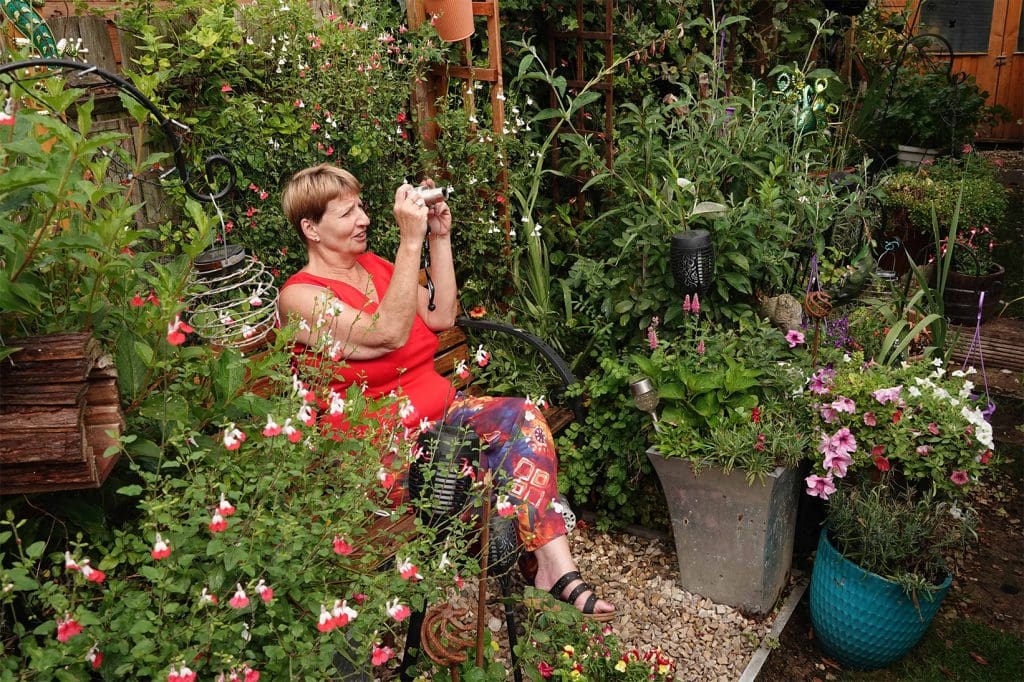Why do Hawfinches have such a big beak?
Kaitlin Parker
Hawfinches’ massive bills are adapted to break large seeds in order to extract and eat the nutritious kernel inside. The seed is first extracted from the fruit by the Hawfinch turning the fruit in its bill and peeling off the pulp against its lower mandible.
Next, the bird cracks the seed open in its powerful beak, positioning the seed cleverly so that the two halves of the outside of the seed fall away, allowing the contents to be swallowed whole. The serrated structure of the inside of its beak allows this bird to tightly grip onto the seed and exert a considerable force to split it – Hawfinches’ jaws can exert a pressure of over 150 pounds per square inch (around a thousand times its own weight)!
Learn more here: Hawfinches: The kernel crusher.
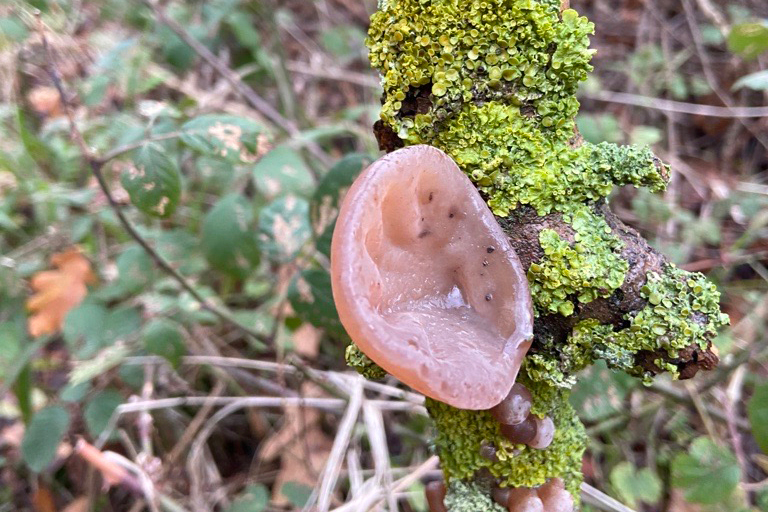
What’s this fungi I found?
Allen Stephens
This is Jelly Ear fungus. It is fairly common in the UK and can be seen throughout the year in shady areas, growing off decaying branches. Jelly Ear fungus grows in clusters on hardwood such as Elder, Beech, Sycamore and Ash.
Like their name suggests, they look remarkably similar to ears; the lobes first appear cup-shaped, with their upper surface velvety and their lower surface wrinkled and shiny. They are pinkish-brown in colour and can grow up to 10cm across.
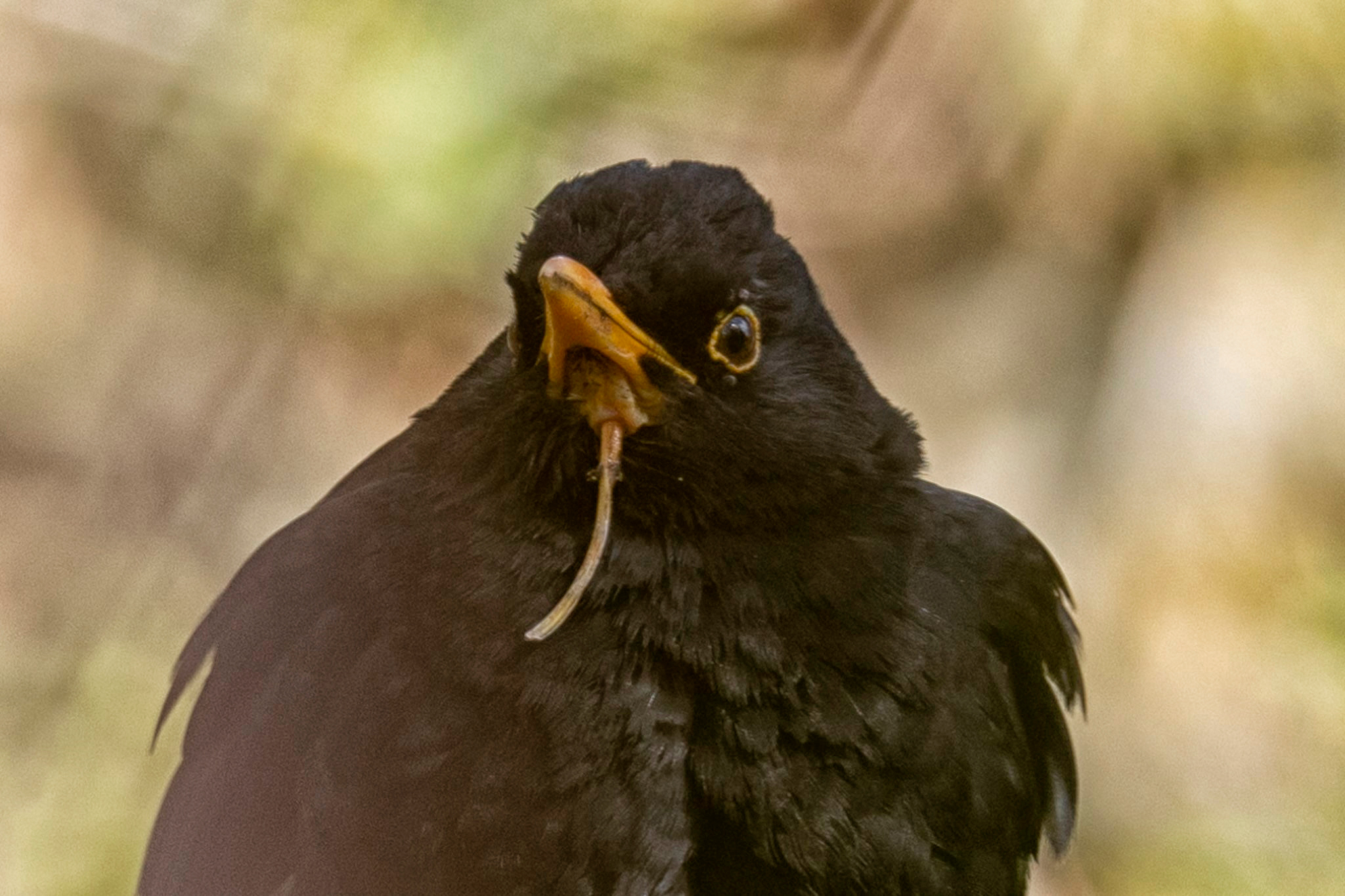
I was birdwatching and spotted this Blackbird – do you know what is wrong?
Jan Gøttske
This is a rare condition called oral fistula and is where the skin and muscle of the lower mandible are missing so the tongue is permanently outside of the mouth.
While we might expect this to compromise a bird’s survival, the adult Blackbird in your photo suggests it is faring well despite the abnormality and is still able to feed and swallow properly. Due to its very limited occurrence, there is very little research about this abnormality, and potential causes are therefore currently unknown.
Bewick’s or Whooper Swan?
Bewick’s and Whooper Swans are winter visitors to our isles. They both travel all the way from the Arctic; Bewick’s arrive from Siberia around October and leave again in March, and from late September Whoopers are present here, returning to Iceland in April. Both species have yellow and black bills, making them quite difficult to tell apart. Size is the key feature to look for, as Bewick’s are the UK’s smallest swan. Here are some key differences to help with identification.
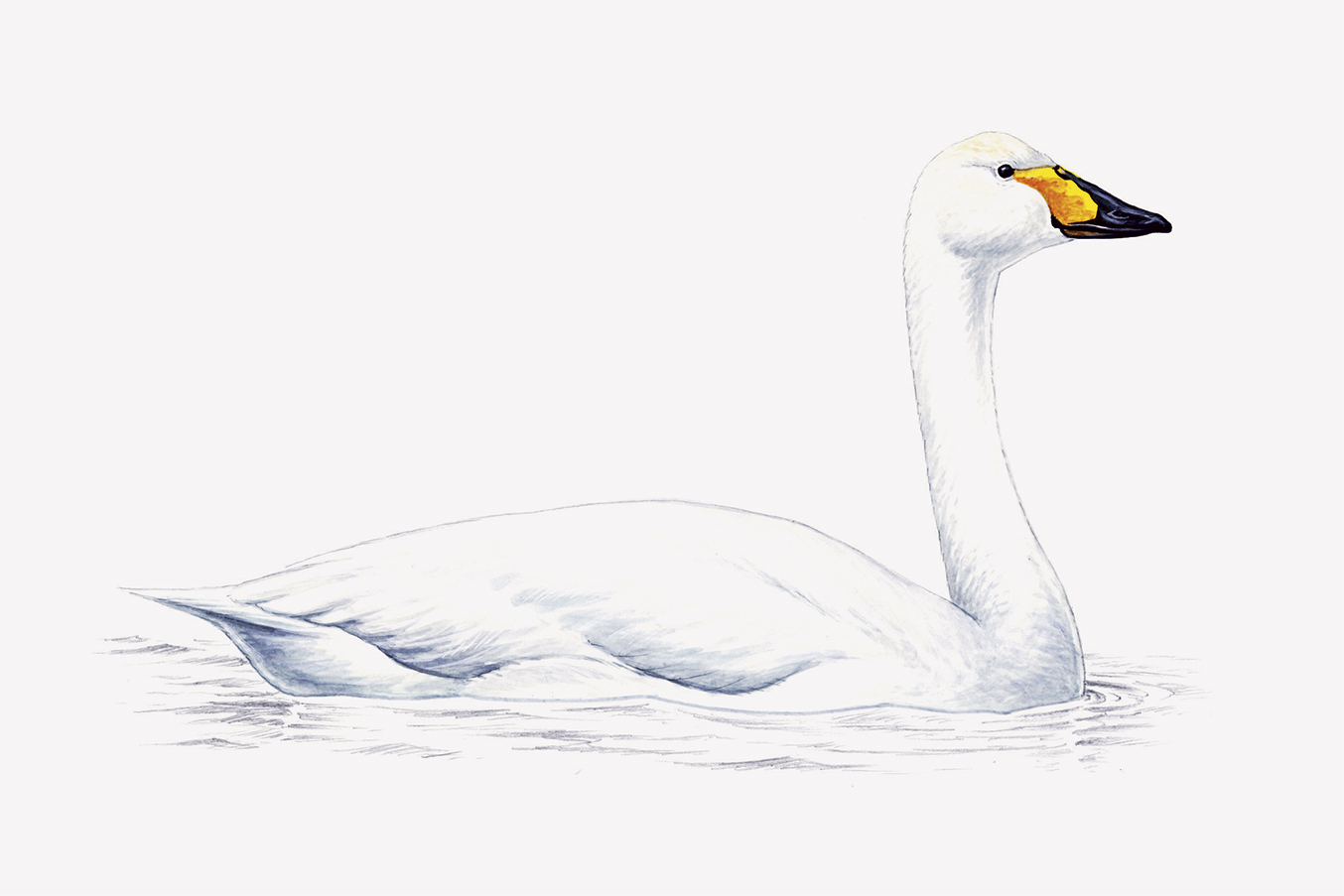
- Smaller in size than both Mute Swan and Whooper Swan
- Shorter and straighter neck
- Slightly curved bill
- Yellow on bill does not reach nostril
- Honking call with a higher tone than a Whooper
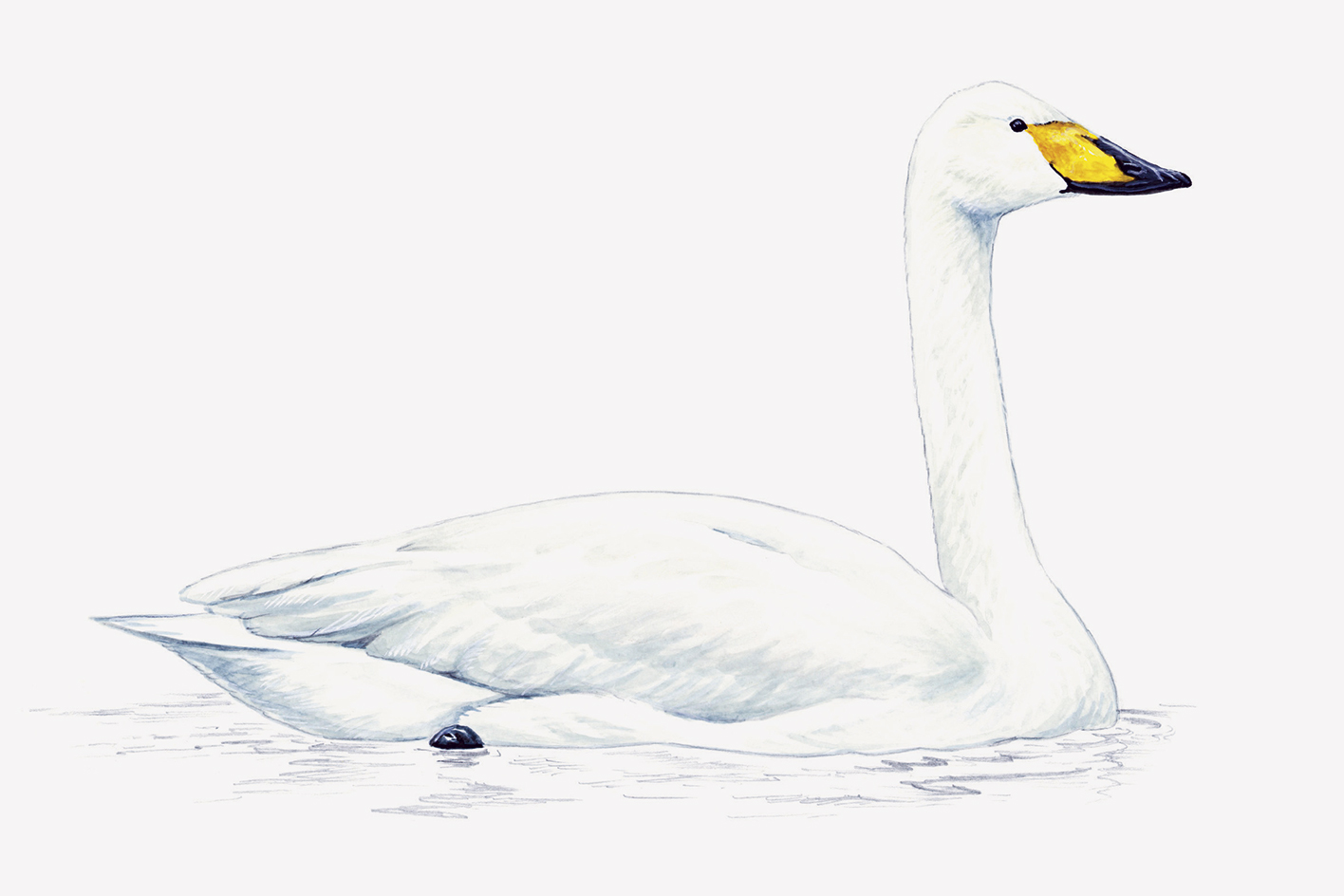
- Large in size, similar to that of a Mute Swan
- Longer neck with a slight curve
- More slender bill, with a straight slope
- Large ‘wedge’ of yellow which reaches nostril
- Honking call with a deeper tone than a Bewick’s
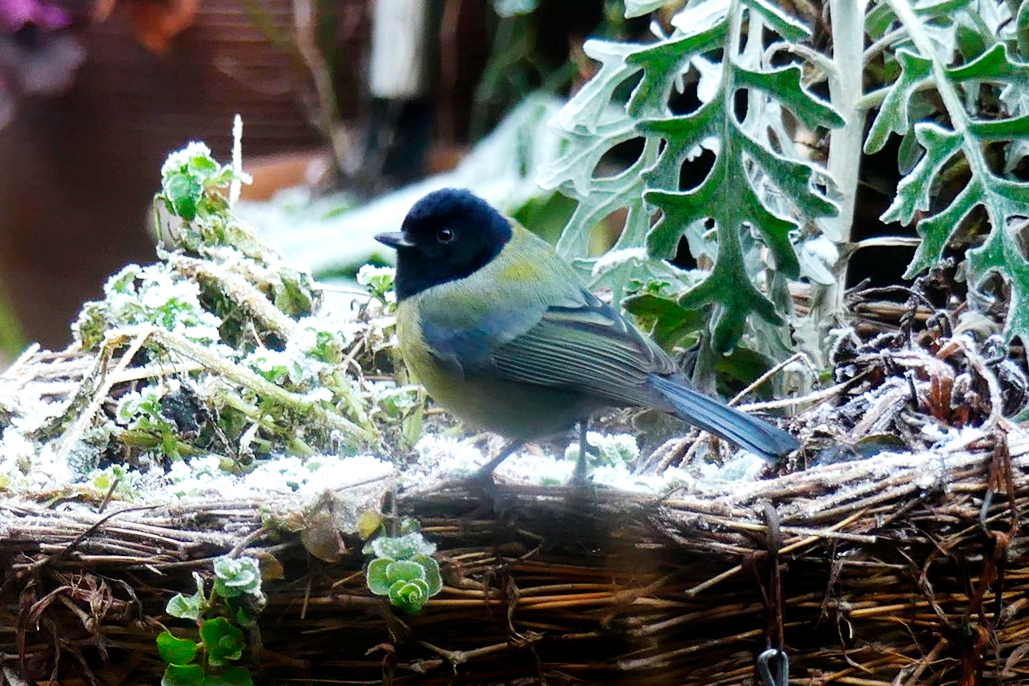
What is this bird I saw in my garden?
Eileen Hodder
What a stunning photo! This is a melanistic Blue Tit. Melanism is a plumage abnormality whereby the amount and/or distribution of dark-coloured melanin pigment is often elevated. This alters the bird’s feather colour so that they appear much darker than usual.
The abnormality can be seen across many species, but interestingly, the highest number of cases are often observed in Great Tits and Blue Tits. If interested, you can report these sightings to the British Trust for Ornithology (BTO) via their Abnormal Plumage Survey since this helps monitor species affected.

Have you ever wondered where bats go in winter?
Although we consider spring as the mating season, bats don’t start mating until autumn! At this time of year, they are on the hunt for mates, and males use special calls to attract females. They also use this time of year to eat large amounts of food, building up fat reserves. By early winter, they select hibernation sites and start experiencing longer torpor (when their metabolic rate temporarily slows to conserve energy). This sluggishness turns to full-blown hibernation by December.
They are usually found in caves, trees or abandoned buildings and hibernate until late February. By spring, their fat stores have depleted so they’re in desperate need of finding food. By early summer they are strong enough to give birth and care for their young.
How to…
Clean a nest box
Once the nesting season is over and our garden birds have fledged their chicks, it’s always a good idea to clean out your nest boxes.
- Open box and remove old nesting material
- Pour in boiling water to kill remaining parasites
- Allow the box to naturally dry and then replace the lid
- Return the box to its original position and leave it empty ready for next year.
It is important that flea powders and insecticides are not used for cleaning nest boxes due to the potential harm this can have on birds and other wildlife. However, you can leave a handful of clean hay or wood shavings since the box may be used during the autumn and winter months for roosting purposes.
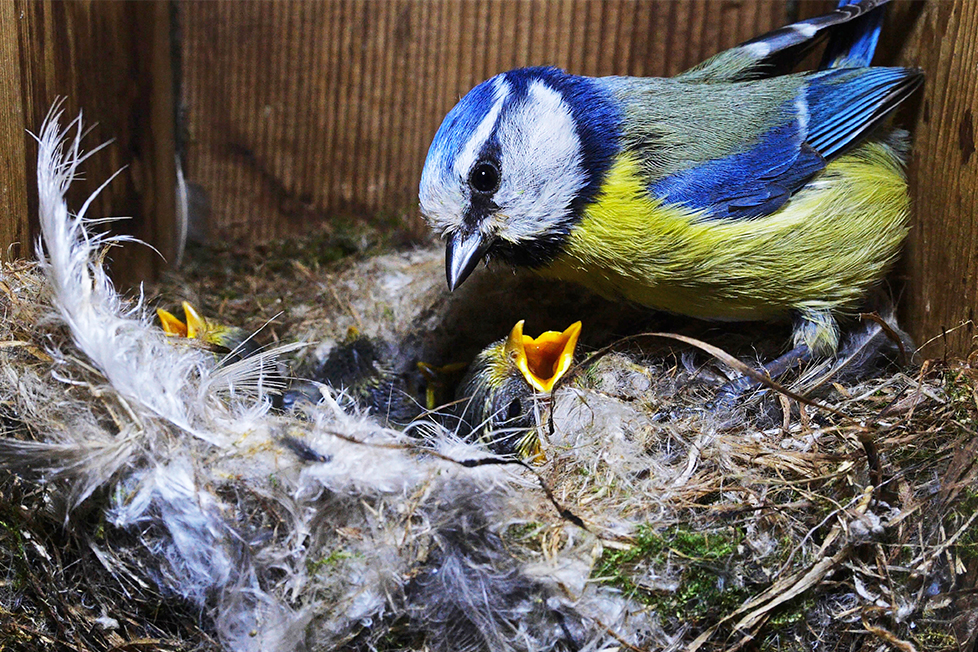
Ask us about wildlife at YourQuestions@rspb.org.uk
You might also like

Your say – autumn/winter 2023

Hawfinches: the kernel crusher
